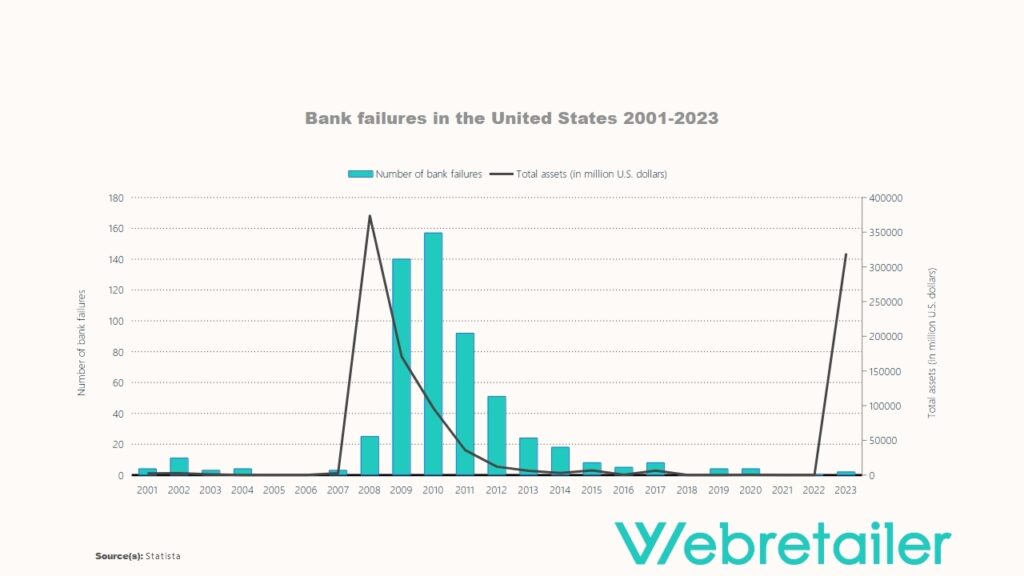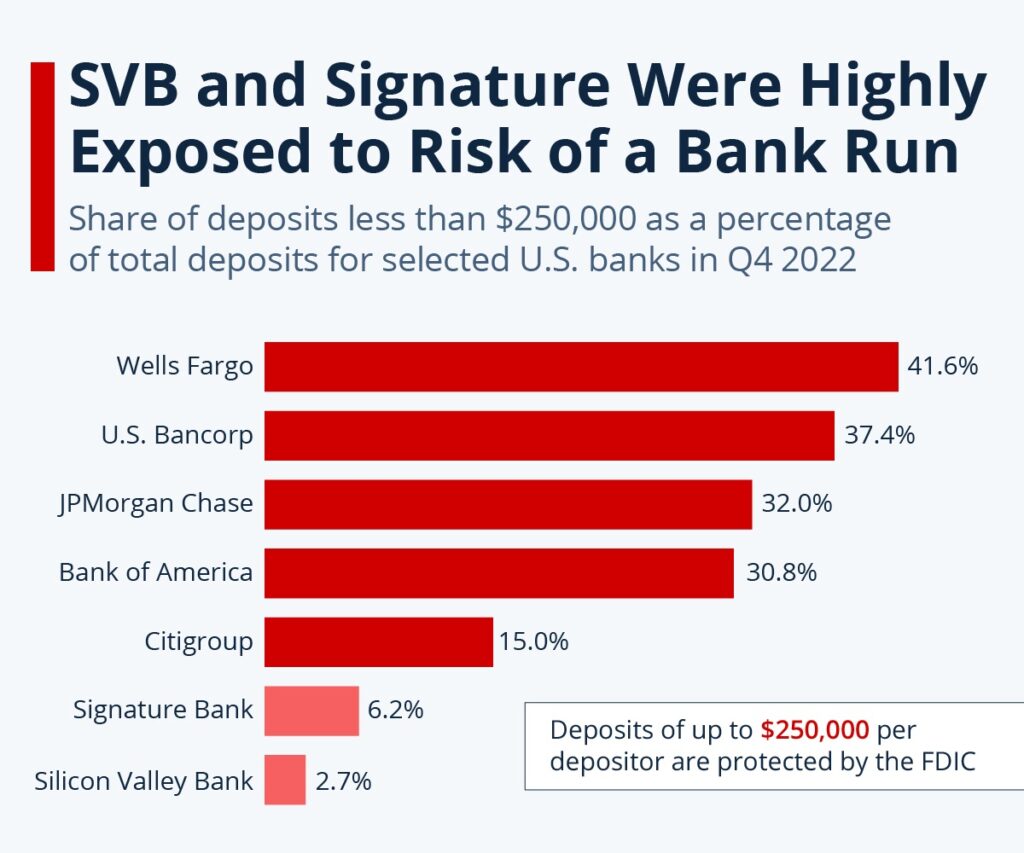Securing Your Bank Assets From Collapse and More News
As we covered in our newsletter last Friday, Silicon Valley Bank and Signature Bank collapsed, sending shockwaves through the financial world. This is not the first time banks have collapsed, but it’s always as surprising, with over $300 billion lost. According to statistics, there were 563 bank failures in the 21st century, and we’ll show you how to prepare for the next one.

Today’s tips have 656 words and take 2 minutes and 37 seconds to read.
Last Friday, we covered the collapse of Silicon Valley Bank, what caused it, and how it affected various companies. This is not an isolated issue in the United States. Credit Suisse has been the cornerstone of Switzerland’s reputation as a place of safe banking since 1856. Today, it’s facing the same issue, and its assets have been in freefall until a bailout purchase from a rival bank.
What does this mean for online businesses? Taking care of your financing and taxes is tricky as is, with layoffs and rising seller fees being present in the ecommerce world for some time now. The last thing you need is to worry whether a bank will make your money disappear due to factors you can’t control.
So, what can you do to protect your future from a collapsing bank? We’ve got some tips for you — let’s jump in!
How to Protect Your Assets From Bank Collapse — Top Tips

1. Spread Your Balance
With over 500 banks failing in the past 22 years, it’s almost a guarantee another collapse will happen in the future. If and when a bank collapses, all uninsured deposits are at risk of being lost forever.
The FDIC (Federal Deposit Insurance Corporation) insures up to $250,000 per bank per account ownership. If your savings exceed that number, it’s wise to spread them on different accounts. You can use the FDIC’s estimator to see what amount exceeds the insurance.
If you want to diversify your assets internationally, WorldFirst helps you set up non-domestic bank accounts with ease.
2. Deposit Swapping
Deposit swapping refers to the process of making investments in a foreign currency at the current spot rate. The investment lasts for a specific period and is then swapped back to your domestic currency at a forward price.
Deposit swapping networks allow you to get the insurance benefit of using multiple banks while dealing with a single bank only. This way, you can separate your deposits into multiple, insured assets.
You don’t have to rely solely on banks, as deposit swapping can also involve:
- Bonds
- Credit unions
- Brokerage accounts
- 401(k) accounts
As an ecommerce business, it’s paramount you make sure you’re in full control of your assets. Ecommerce accounting can be demanding, but it will help you keep track of everything.
3. Use Foreign Currency
Another way to avoid losing uninsured assets is going international. Creating a currency basket not only helps you protect yourself from a single bank collapse but also allows you not to be tied down to a single currency. If, for example, USD drops down rapidly, your offshore account won’t be affected by the drop.
4. Be Proactive
Let’s face it — nobody worries about their deposits until news about a bank collapse catches us by surprise. When Signature Bank and SVB went down, less than 10% of all deposits were FDIC-insured.

One way to avoid being at risk is by being proactive and checking your bank’s financial health. You can do that by checking your account statements and looking at financial ratings from credible sources.
If you’re looking for ways to make the most out of your assets, try out one of the financial tools we’ve reviewed. You can find specialized financial solutions for eBay.
Also in the News
- Etsy starts processing seller payments via alternative routes. TechCrunch
- Brite Payments enters new markets in Central and Eastern Europe. Global FinTech Series

Leave a Reply